Chord Extensions for Jazz Piano
In this article you'll learn everything you need to know about chord extensions in jazz:
- How to find the 9th, 11th and 13th of any jazz chord.
- How to find altered chord extensions (like the b9, #9, #11, b13).
- The difference between C6 and C13 - and why we use different numbers.
- Plus a look at sus 4 chords, and the difference between '11' and '4' in a chord.
Let's dive right in...
What are Chord Extensions?
In jazz, ‘chord extensions’ are the 9th, 11th, and 13th of a chord. So jazz chords are built in 3rds, and when you play up the scale in 3rds (every other note) it takes you all the way up to the 13th.
The lower four notes (1 3 5 7) are known as 'chordal tones', and the upper three notes (9 11 13) are known as 'chord extensions', or simply 'extensions':

How to Find a Chord Extension
Chord extensions cause a lot of confusion to students because you would think they’d be different, depending on what type of chord it is - you'd think that major chords would have major extensions, minor chords would have minor extensions, and so on.
However, it's much simpler than that:
Chord extensions are always built from the major scale - regardless of what type of chord it is - that goes for minor 7 chords, V7 chords, minor-major 7 chords, and so on.
So to find the 9th, b, or b of a chord - just imagine a major scale running up from the chord’s root.
So for a C7 chord, you’d walk up the notes of C major scale to find each extended note:

- The 2nd of the scale is also the 9th = D.
- The 4th of the scale is also the 11th = F.
- The 6th of the scale is also the 13th = A.
Altered Chord Extensions
But what if the chord symbol contains an altered chord extension (sharpened or flatenned) - like 'C7b9', or 'C7#11', or 'C7b13'?
Not a problem - just find the natural chord extension first (by running up the major scale), and then flatten it or sharpen it:

EXAMPLE: So let's say I saw the chord symbol 'C7b9' - first I would find the natural 9th by running up C major scale to the 2nd (9th) - which would be D:
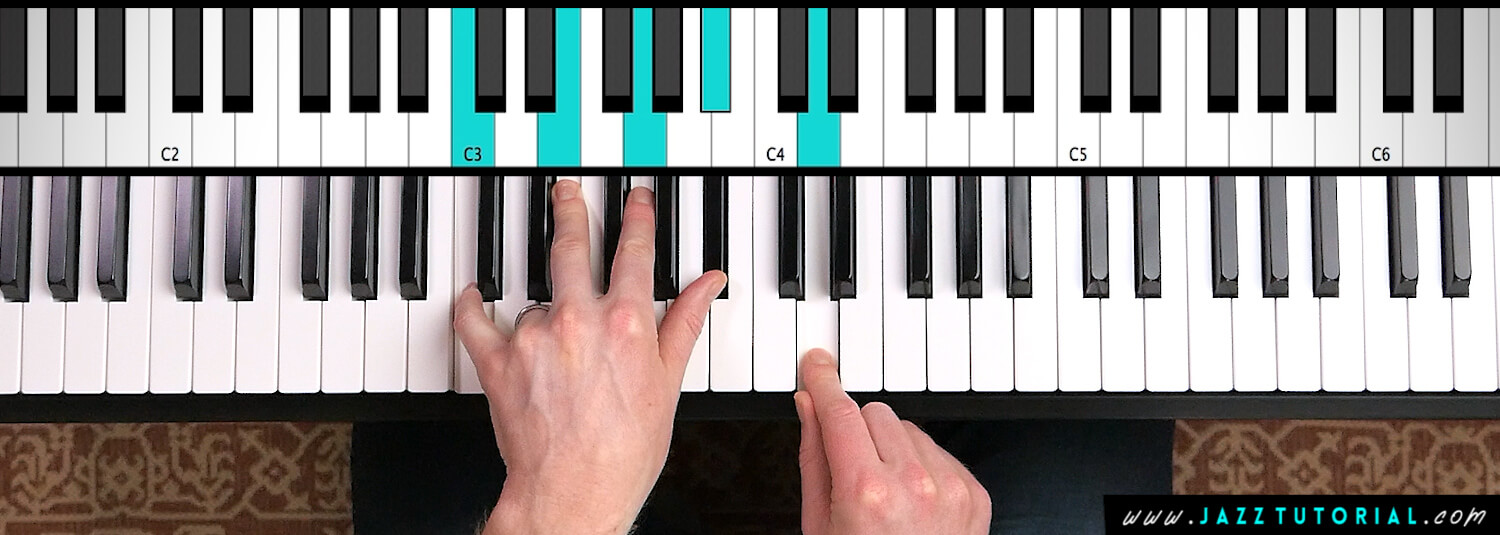
Next, I would flatten the 9th by lowering it one half-step - to Db:
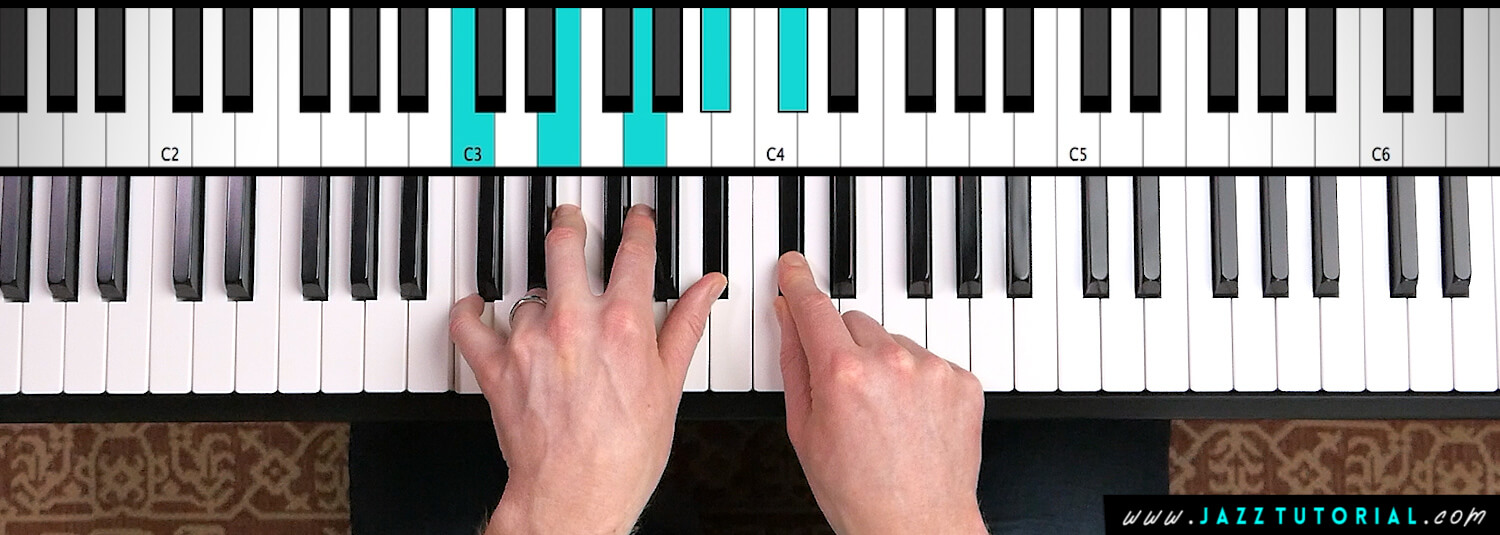
Or let's say the chord symbol was 'C7#9' instead - in this case you would sharpen the 9th, so D would become D# (or Eb):
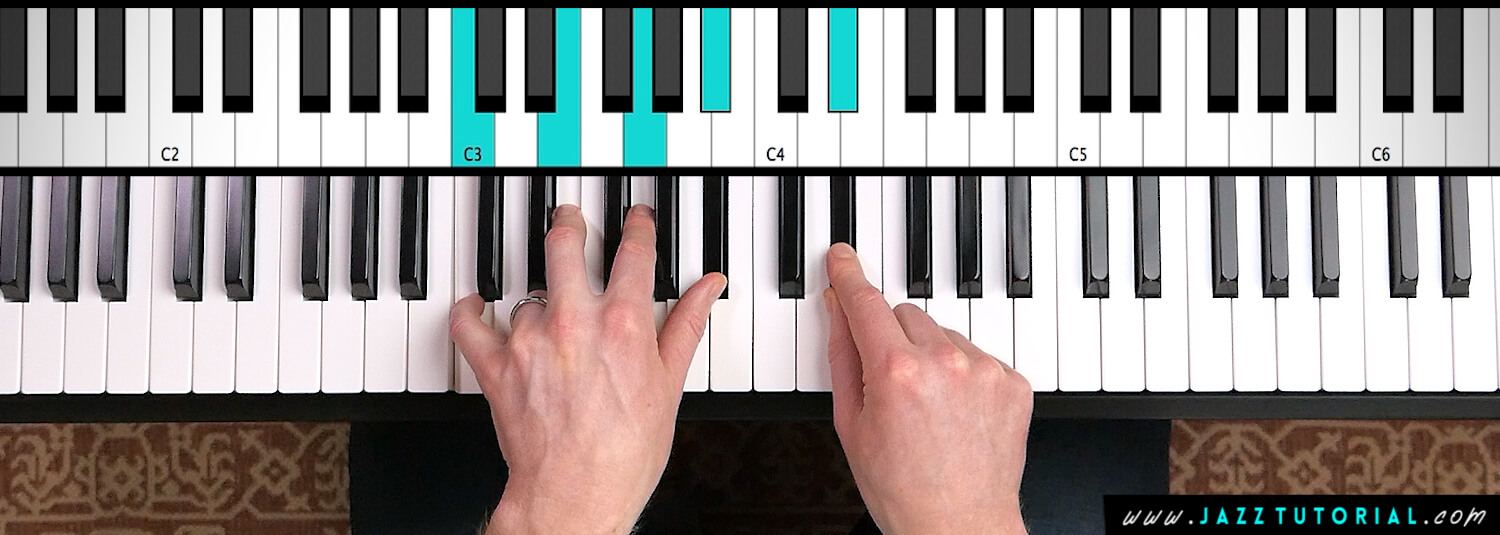
This is the exact process you would go through to add any chord extension (11th, #11th, 13th, b13th) to any chord (C min 7, C maj 7, etc).
FREE RESOURCE: You can download my free ‘Chord Symbol Reference Guide' which shows you ALL types of jazz chord on one page. Click here to download
Alternative Numbers Used in Jazz
Another source of confusion is the different numbers you'll sometimes see used in chord symbols - sometimes you'll see '13', whereas other times you'll see '6'. Or simetimes you'll see '11' whereas other times you'll see '4'.
Most of the time, chord extensions are written using odd numbers - ‘9’, '11’ and ’13’ - this way it reinforces the fact that chords are stacks of 3rds (1 3 5 7 9 11 13).
However, there are a couple of numbering conventions which have 'caught on' - when it comes to the use of '13' vs '6', and '11' vs '4':
'6' or '13'?
Over a C chord, the numbers ‘6’ and ’13’ both refer to the same note, A. However, if the chord is a major or minor chord, then the arranger will use the number ‘6’: 'C6' or 'Cm6'.
Whereas if the chord is a V7 chord, then the arranger will use ‘13’, 'C13':

Note that in the C13 chord, the 7th is being played below the 13th. Whereas in the C6 and Cm6 chords there is no 7th - the 6th is played instead of the 7th.
'4' or '11'?
Simarly, over a C chord, the numbers ‘4’ and '11’ both refer to the same note, F.
However, if the chord is a minor 7 chord or a V7 chord, then it’s common to use the number '11’ (this will usually be a #11 over V7 chords).
Whereas if the chord is a major 7 chord, then most arrangers will write ‘4’ (e.g. 'C maj 7 #4'):

Note that not all real books follow this 4/11 numbering convention - sometimes you’ll see ‘C maj 7 #11’ in a lead sheet - so just remember that both numbers (4 and 11) mean the same note, they’re just numbered differently based on the type of chord it is.
Sus 4 Chords Explained
One final chord to cover is the ‘sus 4 chord’ - short for ‘suspended 4th’. In jazz, a sus 4 means to play the chord’s 4th instead of the 3rd.
Here’s how ‘C7 sus 4’ looks - notice how I'm playing the chord's 4th (F) instead of the 3rd (E):
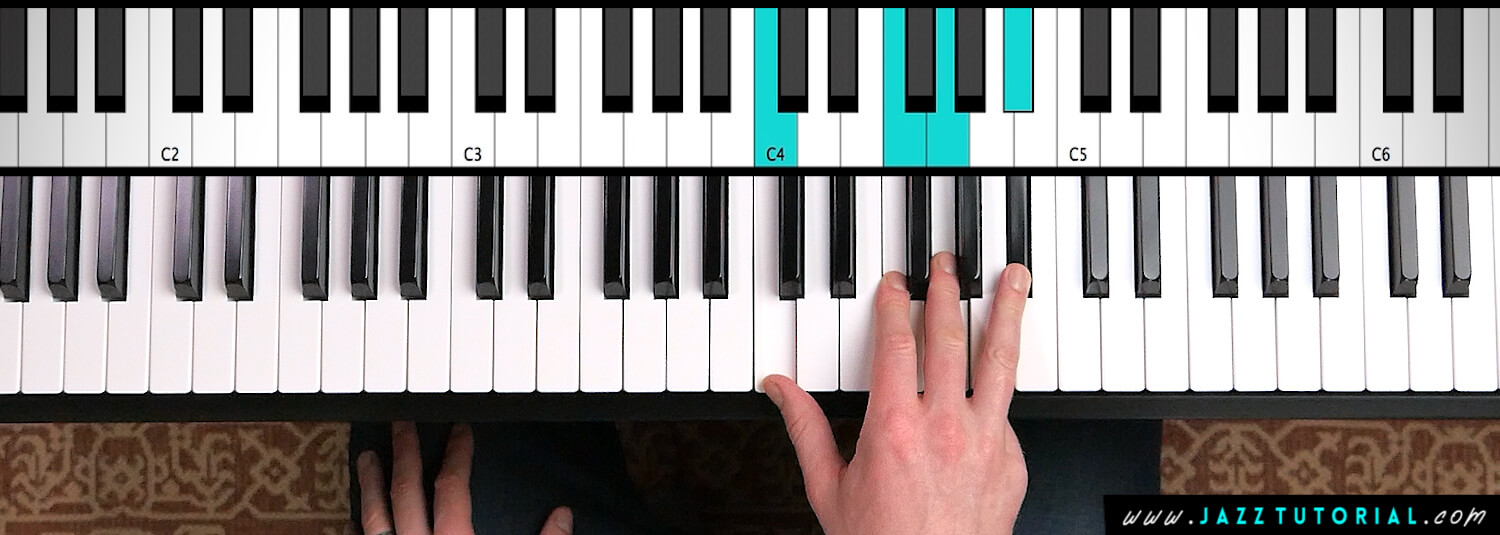
NOTE: In other styles of music (like classical music), a ‘suspended 4th’ would normally resolve to the chord’s 3rd, before changing to the next chord. However in jazz, the sus 4 is held for the full duration of the chord.
Sus 4s are most commonly applied to V7 chords. Here are a couple of my favorite chord voicings for C7 sus 4:
First, you can simply play a Bb major triad over C - this chord voicing can be heard famously in 'Song For My Father' by Horace Silver:
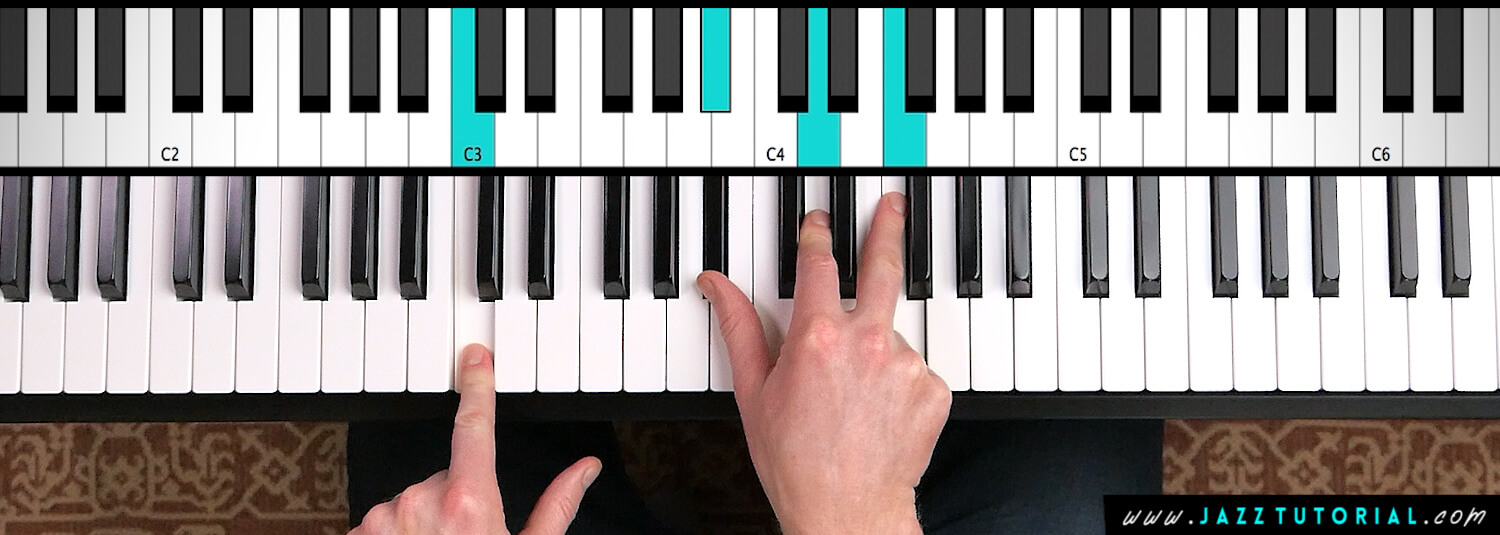
Or you can play a Bb major 7 chord in your right hand, over C in the bass:
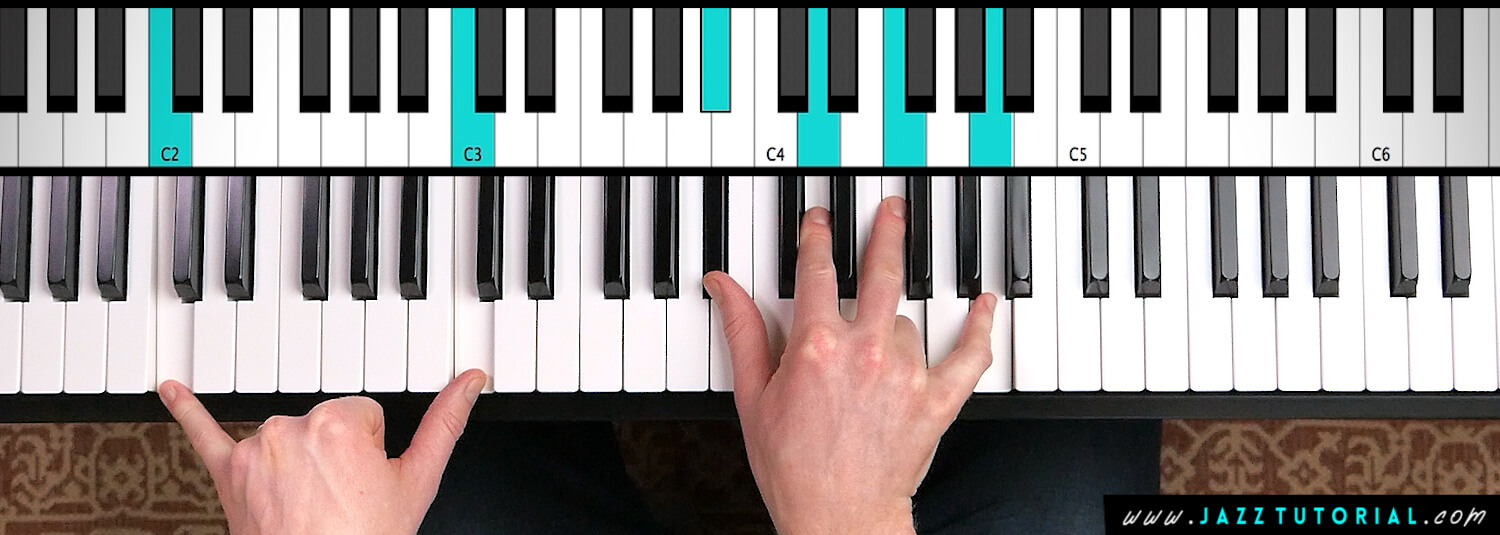
FREE RESOURCE: For more jazz piano chord voicings, you can download my free ‘Jazz Piano Chord Voicing Guide' which shows you 5 types of chord voicing used by professionals (shells, 4th voicings, rootless voicings, and more), and my simple method to voicing any jazz song. Click here to download
Summary
Well done, you made it! In this jazz piano lesson we covered:
-
How chord extensions work - 9ths, 11ths and 13ths are always built from the chord's major scale, even when it's a minor chord!
-
How to find altered chord extensions - find the natural chord extension first (from the major scale), then sharpen or flatten it.
-
Why different numbers are sometimes used - '6' is used for major and minor chords, '13' for V7 chords. '11' is used for minor 7 and V7 chords, '4' for major 7 chords.
Free Jazz Piano Resources
Get my free sheet music collection sent to your email inbox:
-
29 Jazz Piano Licks (sheet music)
-
The Jazz Piano Chord Voicing Guide (ebook)
-
Instagram Jazz Piano Riffs (sheet music + MIDI)
-
Jazz Chords Ultimate Guide
About the Author
Julian Bradley is a jazz pianist and music educator from the U.K. He has a masters degree in music from Bristol University, and has played with and composed for a variety of big bands.
Julian runs the popular Jazz Tutorial YouTube channel and writes educational jazz lessons at JazzTutorial.com
